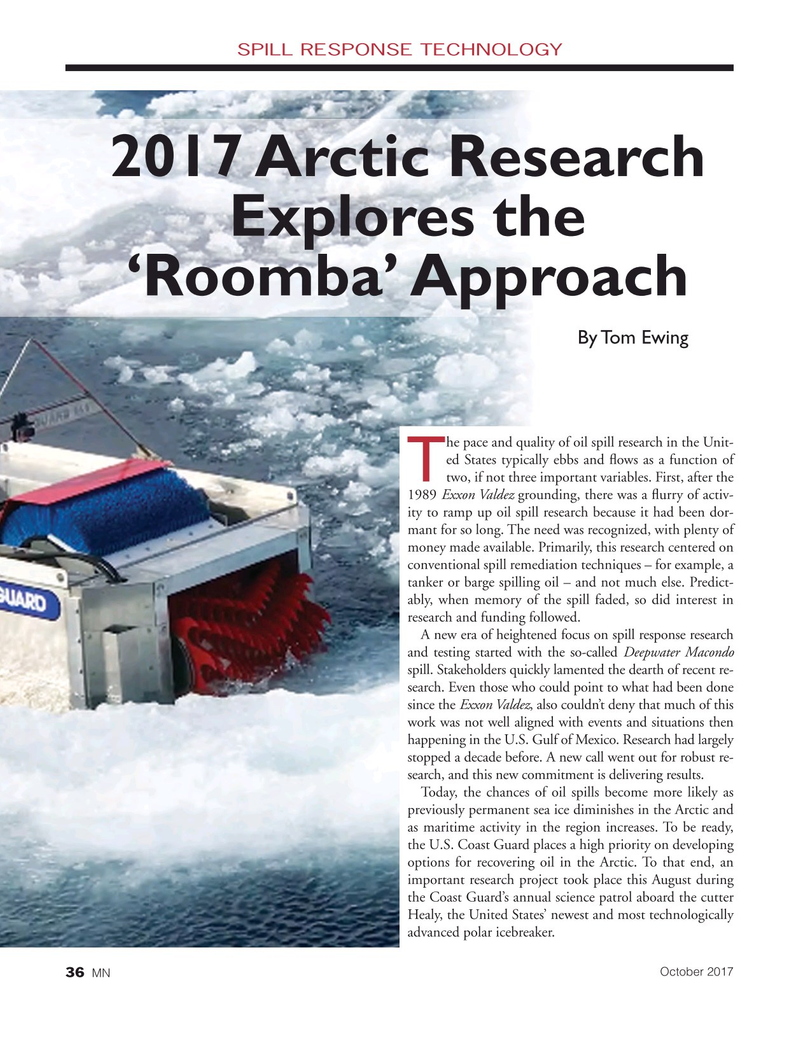
Page 36: of Marine News Magazine (October 2017)
Salvage & Spill Response
Read this page in Pdf, Flash or Html5 edition of October 2017 Marine News Magazine
SPILL RESPONSE TECHNOLOGY 2017 Arctic Research
Explores the ‘Roomba’ Approach
By Tom Ewing he pace and quality of oil spill research in the Unit- ed States typically ebbs and ? ows as a function of two, if not three important variables. First, after the
T 1989 Exxon Valdez grounding, there was a ? urry of activ- ity to ramp up oil spill research because it had been dor- mant for so long. The need was recognized, with plenty of money made available. Primarily, this research centered on conventional spill remediation techniques – for example, a tanker or barge spilling oil – and not much else. Predict- ably, when memory of the spill faded, so did interest in research and funding followed.
A new era of heightened focus on spill response research and testing started with the so-called Deepwater Macondo spill. Stakeholders quickly lamented the dearth of recent re- search. Even those who could point to what had been done since the Exxon Valdez, also couldn’t deny that much of this work was not well aligned with events and situations then happening in the U.S. Gulf of Mexico. Research had largely stopped a decade before. A new call went out for robust re- search, and this new commitment is delivering results.
Today, the chances of oil spills become more likely as previously permanent sea ice diminishes in the Arctic and as maritime activity in the region increases. To be ready, the U.S. Coast Guard places a high priority on developing options for recovering oil in the Arctic. To that end, an important research project took place this August during the Coast Guard’s annual science patrol aboard the cutter
Healy, the United States’ newest and most technologically advanced polar icebreaker.
October 2017
MN 36

 35
35

 37
37
